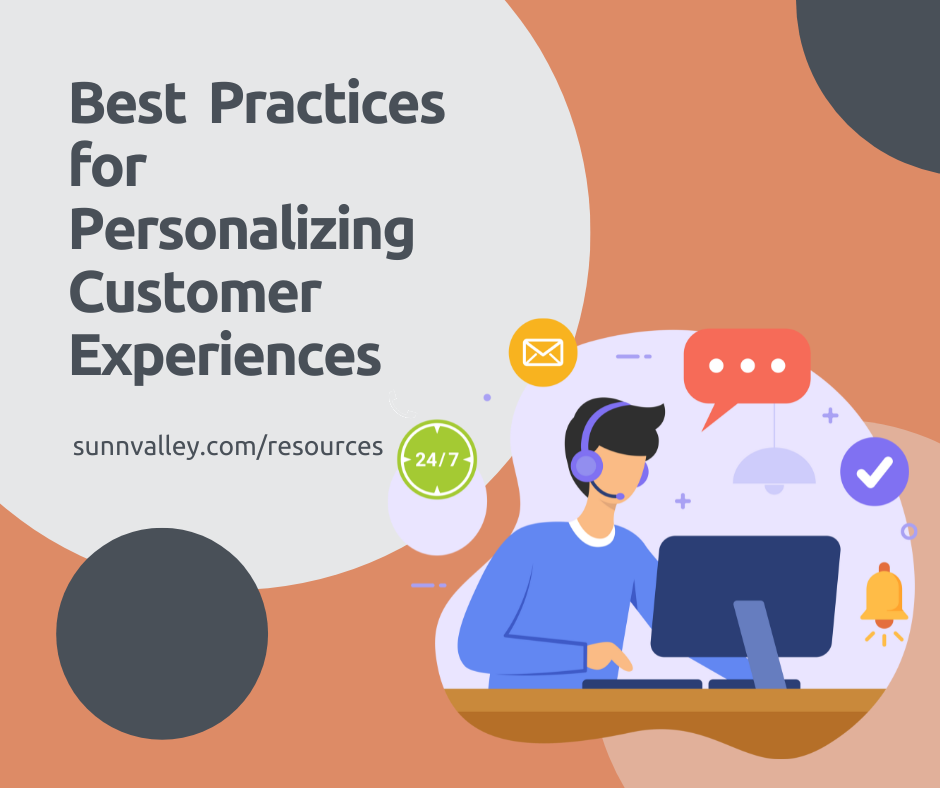In today’s highly competitive business landscape, the key to success lies in creating a personalized and memorable experience for your customers. Gone are the days when a one-size-fits-all approach sufficed; consumers now expect businesses to understand their individual needs and preferences. Personalization goes beyond addressing customers by their first names in emails; it involves tailoring every touchpoint of their journey with your brand. In this blog post, we will explore the importance of personalization and provide practical tips on how to implement it to enhance your customer experience.

Understanding the Power of Personalization
- Building Emotional Connections: Personalization fosters a sense of connection between customers and your brand. By acknowledging their preferences and anticipating their needs, you create a more emotional and meaningful relationship. This emotional bond can lead to increased customer loyalty and advocacy.
- Boosting Customer Satisfaction: When customers feel that a brand understands them, it leads to higher satisfaction levels. Personalized experiences make customers feel valued, and satisfied customers are more likely to become repeat buyers and recommend your brand to others.
- Driving Revenue Growth: Personalization has a direct impact on your bottom line. According to studies, businesses that effectively implement personalization strategies see a significant boost in revenue. By recommending relevant products or services based on customer behavior and preferences, you can drive upsells and cross-sells.
Implementing Personalization Strategies
- Leveraging Customer Data: The foundation of personalization lies in the data you collect. Utilize customer data to understand their behaviors, preferences, and purchase history. This information can be gathered through various touchpoints, including website interactions, social media engagement, and past purchase data.
- Segmentation for Targeted Campaigns: Segment your customer base to tailor your marketing efforts. Create segments based on demographics, purchase history, or engagement level. This allows you to send targeted messages that resonate with specific groups, increasing the likelihood of conversion.
- Dynamic Content Personalization: Implement dynamic content on your website and in marketing materials. This involves showing different content to different users based on their preferences or behavior. For example, an e-commerce website can display personalized product recommendations based on the user’s browsing history.
- Personalized Email Campaigns: Email marketing remains a powerful tool for personalization. Craft personalized email campaigns that address customers by name, recommend products based on their preferences, and provide exclusive offers tailored to their needs. Use automation to send timely and relevant messages.
- AI-Powered Recommendations: Harness the power of artificial intelligence to provide personalized recommendations. Machine learning algorithms can analyze customer data to predict their preferences and behaviors, enabling you to offer highly targeted suggestions. This can be applied to product recommendations, content suggestions, and more.
Best Practices for Personalizing Customer Experiences
- Seek Permission and Be Transparent: Respect customer privacy by seeking permission before collecting and using their data. Be transparent about how their information will be used to personalize their experience. Building trust is crucial in fostering a positive customer relationship.
- Consistency Across Channels: Ensure a seamless experience by maintaining consistency across all customer touchpoints. Whether a customer interacts with your brand through social media, email, or in-store, the personalized experience should be cohesive and aligned with your brand identity. See our Facebook, Instagram & LinkedIn.
- Regularly Update Customer Profiles: Customer preferences change over time. Regularly update customer profiles to ensure that your personalization efforts remain accurate and relevant. Encourage customers to provide feedback or update their preferences through surveys or user accounts.
- Test and Optimize: Implementing personalization is an ongoing process. Continuously test different personalization strategies to understand what resonates best with your audience. Use analytics to measure the impact of personalization efforts and optimize your approach accordingly.
- Humanize Interactions: While technology plays a crucial role in personalization, it’s essential to maintain a human touch. Personalized experiences should feel genuine and not solely driven by algorithms. Incorporate personalization within a broader strategy that values authentic human connections.
In conclusion, personalizing the customer experience is no longer an option but a necessity for businesses aiming to thrive in today’s competitive landscape. By understanding the power of personalization and implementing effective strategies, you can create memorable experiences that resonate with your customers, drive loyalty, and ultimately contribute to the success of your brand.

